Poaching Survivor, Ike the White Rhino Undergoes Vital Operation
On the 12th of December 2023, a team of valued workers throughout the Kapama reserve came together to help Ikanyega (Ike) the White Rhino, a poaching survivor from South Africa. The catch and release mission was led by Dr Peter Rogers and HERD founder Adine Roode, who each played a vital role in Ike’s initial rescue and ongoing rehabilitation. The cost of the treatment was covered by Animal Survival International (ASI) — an organisation that works to help animals around the world who are threatened and suffering. We are immensely grateful to them for their help in raising funds for this pricey but vital operation.
Watch the treatment here:
Rhino horns are poached and sold illegally for traditional Chinese medicine, and over the years rhino populations have dwindled at a concerning rate. Nearly 10,000 South African rhinos were killed for their horn since 2007.
Dr Rogers and Adine are doing inspiring work at the forefront of rhino rehabilitation as poaching efforts have taken a gruesome turn to avoid increased anti-poaching security measures throughout South Africa. The traditional method of poaching involves shooting the animal dead before removing the horns, however in an attempt to draw less attention, poachers have begun using a tranquilliser to silently take down the rhino before hacking off its horns, leaving it to die from its wounds or wake up in critical condition.
Ike was targeted by poachers in July 2015, he was found by an anti-poaching unit with both horns and a large chunk of his face savagely cut off. Ike spent 14 months at Saving the Survivors (STS), a treatment centre for animals targeted by poachers, where he received extensive medical attention for his severe facial wounds. In September 2016 Ike was relocated to HESC (Hoedspruit Endangered Species Centre), founded by Adine’s mother, where he spent three years in rehabilitation. He was introduced to another poaching survivor Philippa, and the two rhinos formed a special bond throughout their time in rehabilitation.
Ike and Philippa were released together onto the Kapama Reserve in 2019, and they’ve both adapted well to their new lives. However, due to the severity of Ike’s wounds, he has required follow up treatments to ensure he doesn’t fall victim to infection or more seriously, maggot infestation.
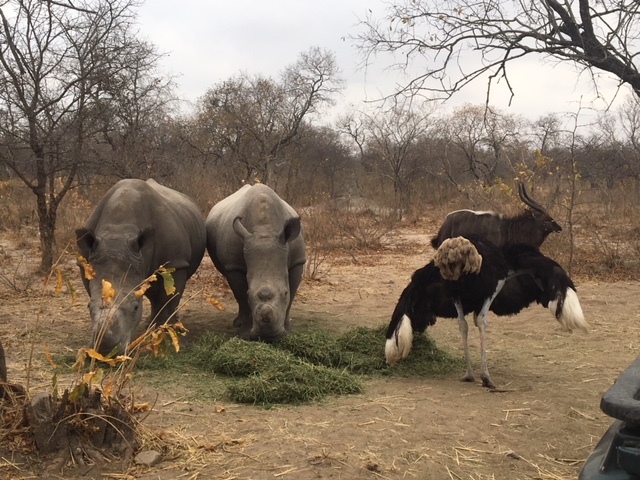
Philippa and Ike, August 2018
A tracker was used to locate Ike, then Dr Rogers darted the big bull from a helicopter. When Ike was sedated with his eyes covered and ears blocked, Dr Rogers got to work on the wound, explaining the procedure as he went.
He said that Ike’s front horn has grown back successfully. However, the back horn was cut so deep into his face that it wasn’t able to heal and regrow, leaving him with a gruesome open wound in the middle of his face despite the seven years of treatment and rehabilitation. But Dr Rogers assured the team “it is not as bad as it looks” and Adine added that the injury looks far better than the last time they treated it.
“This is actually looking really good guys,” Dr Rogers said as he cleaned out of the large wound. “People worry about infection but this wound is not infected. Our biggest concern here is maggots. Maggots will irritate the wound and cause the rhino to rub its head against a tree, making the wound bigger and bigger. Maggots can be good because they eat dead tissue but they also create dead tissue, so it’s a self-perpetuating cycle.” Dr Rogers was very pleased to see that there was no sign of maggots in the wound. He cleaned it thoroughly and then coated the area with tar, which he explained is an “old farmers remedy that works as an anti-inflammatory and keeps blow flies and maggots away”.

The team removed the blindfold and and gave Ike his space as he gradually got to his feet and retreated unsteadily into the bush. Dr Rogers hopes this will be the last time they have to treat Ike, as the process is costly, not to mention traumatic for the rhino. The combined efforts of dedicated anti-poaching units and rehabilitation centres such as HESC and STS has been integral to the survival of South Africa’s precious rhino population. And Dr Roger’s ability to adapt to evolving poaching methods has lead to multiple success stories, such as Ike and Philippa, providing hope and encouragement for the anti-poaching movement.
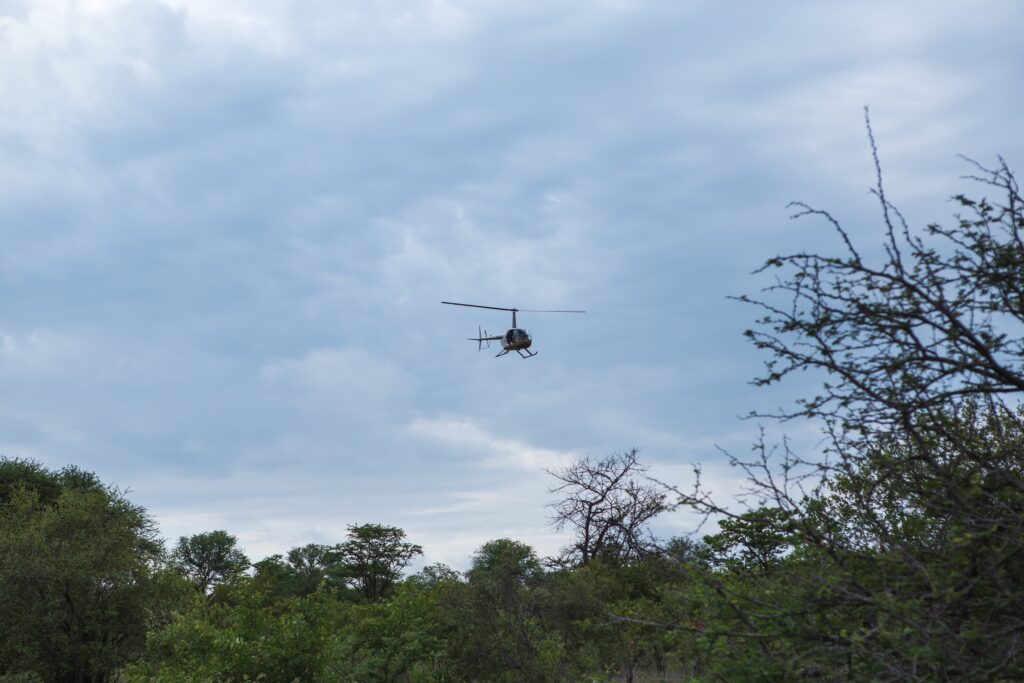
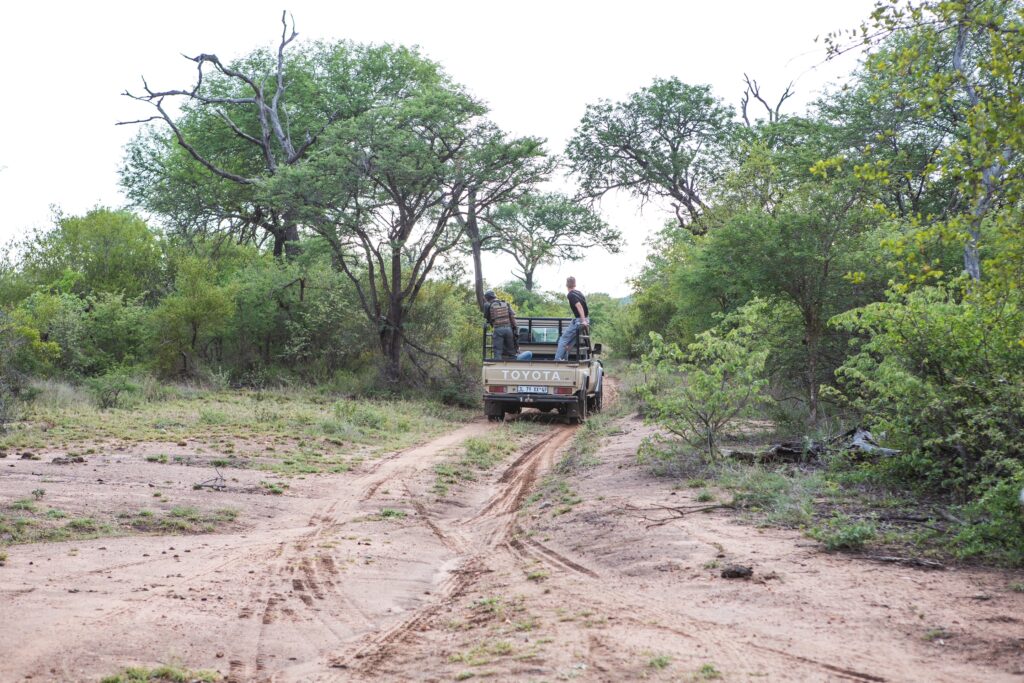
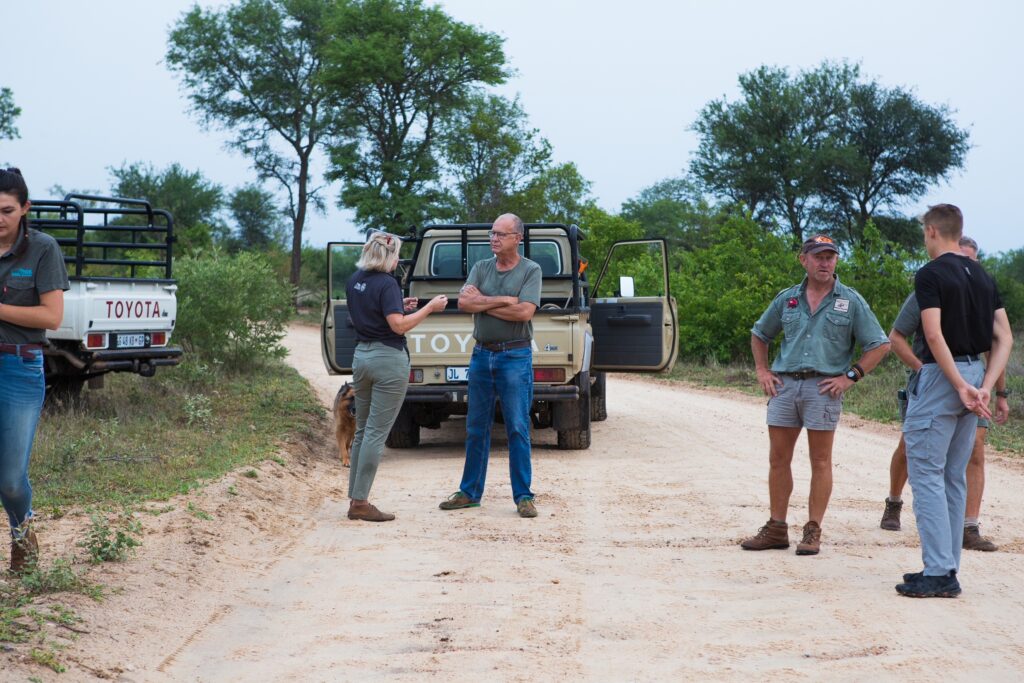
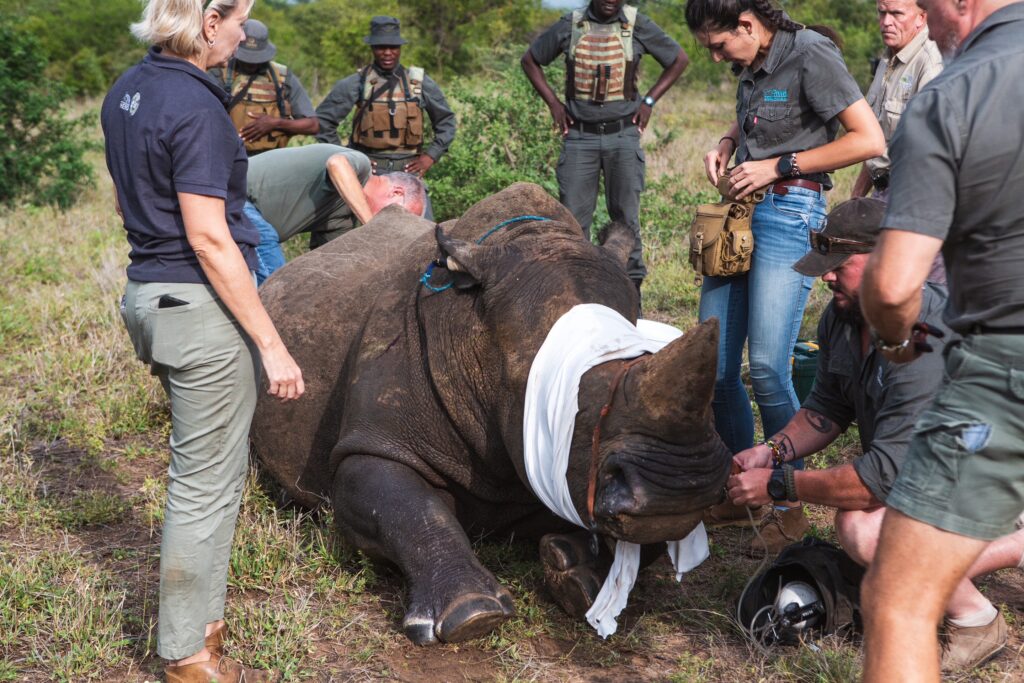
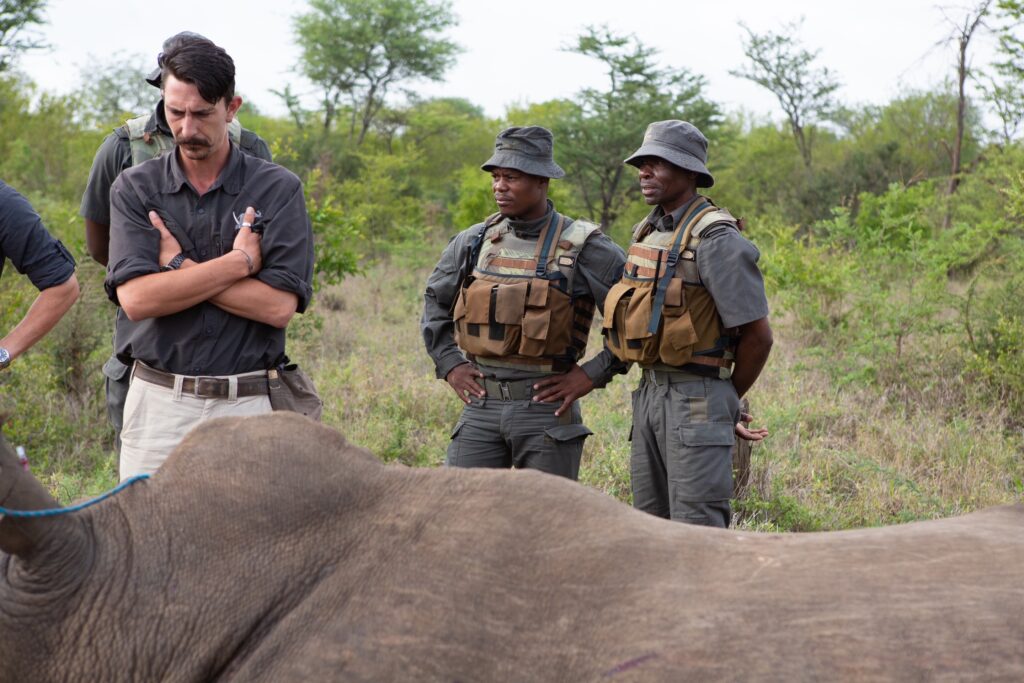
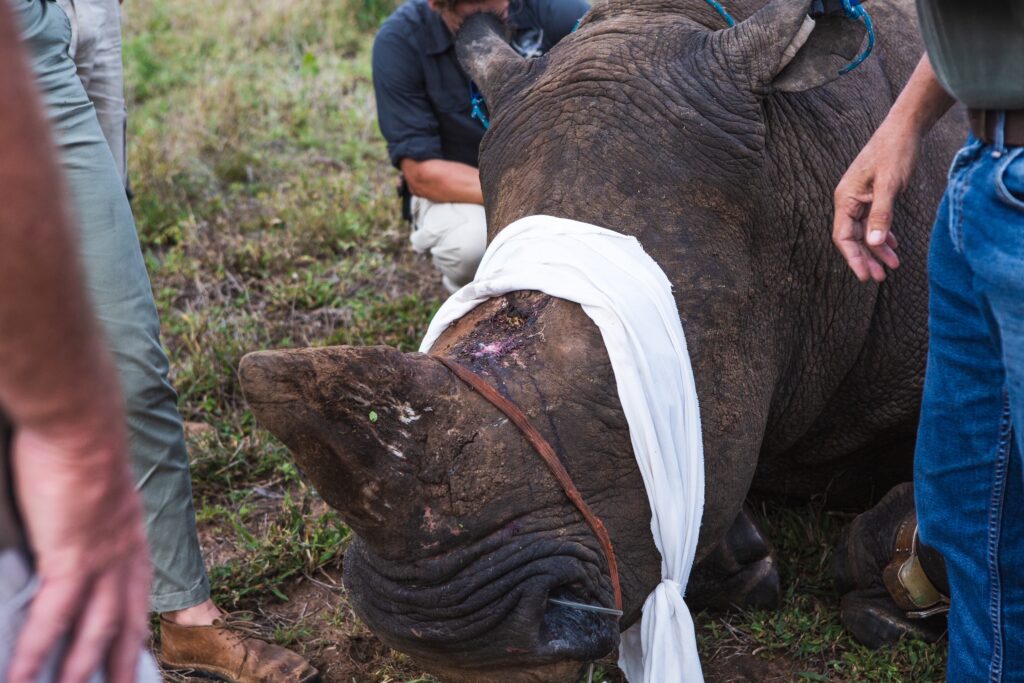


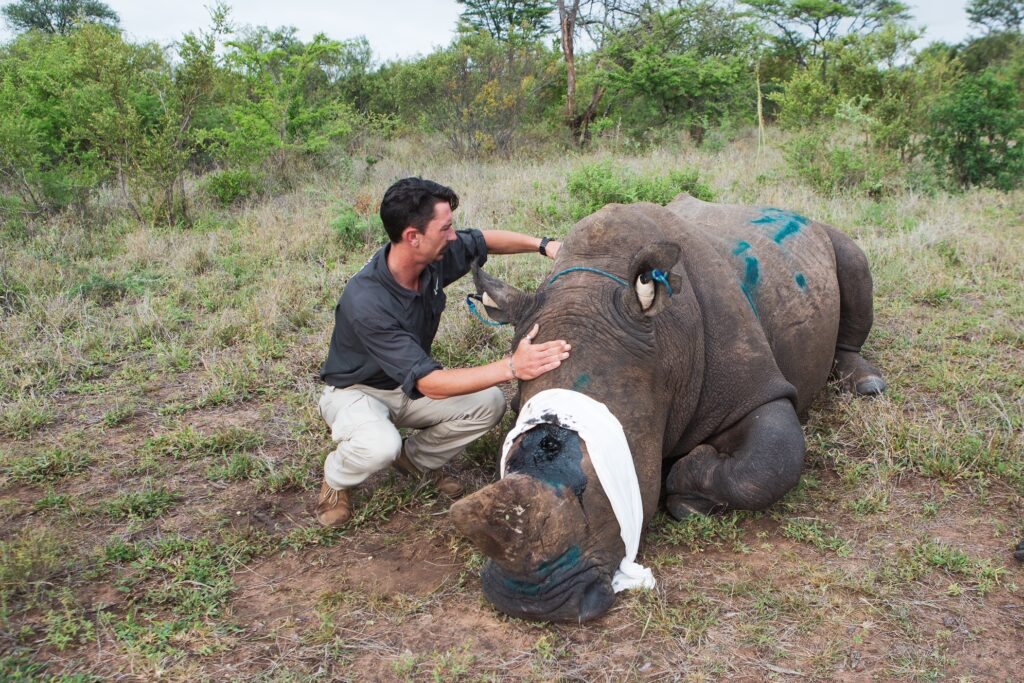
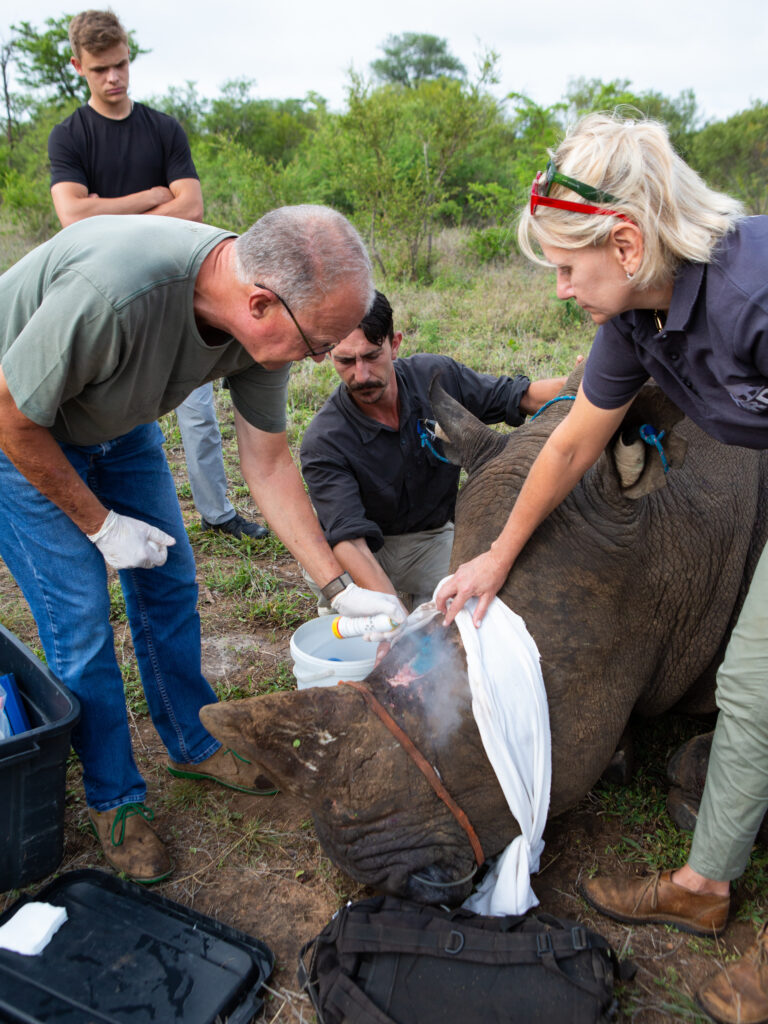

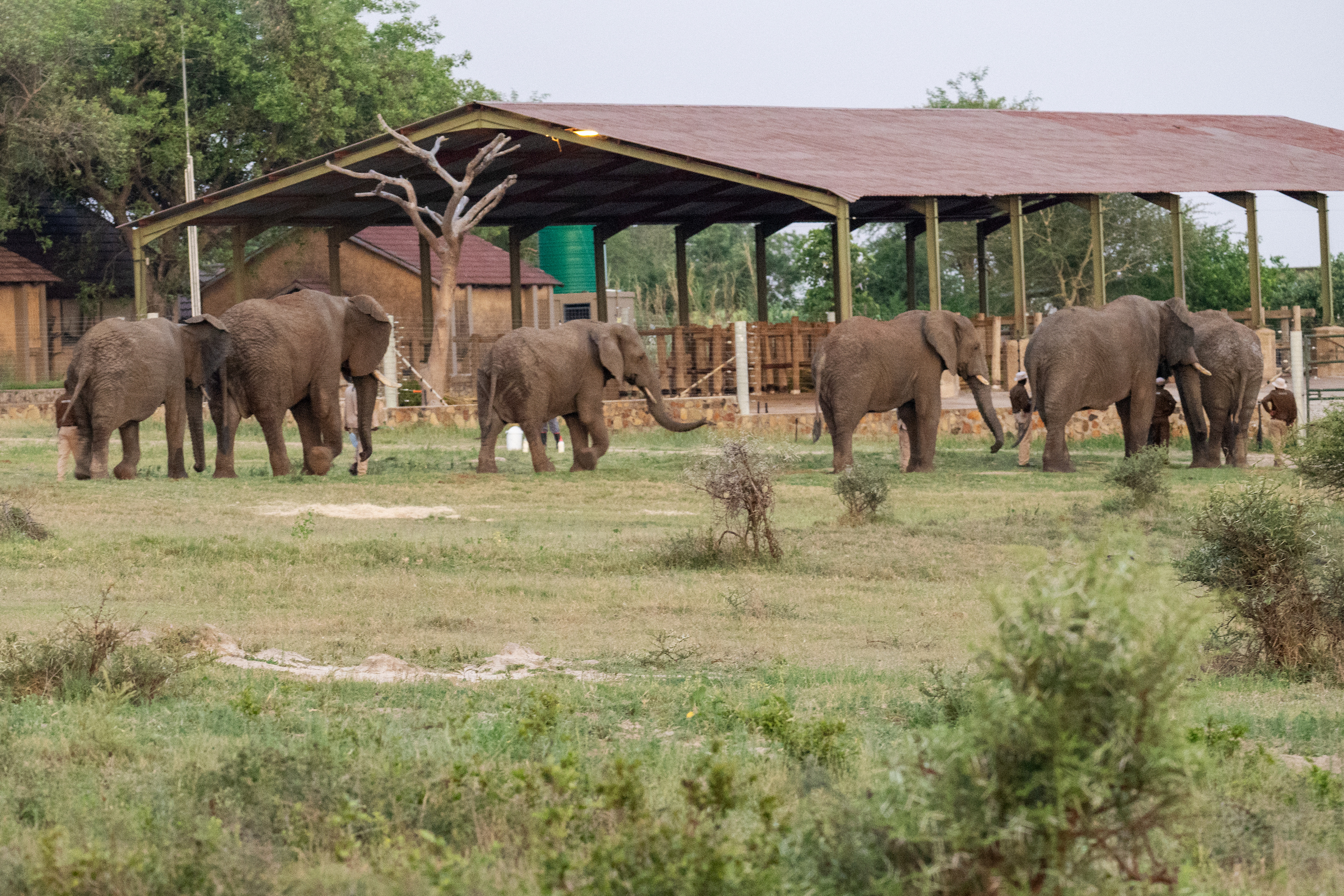

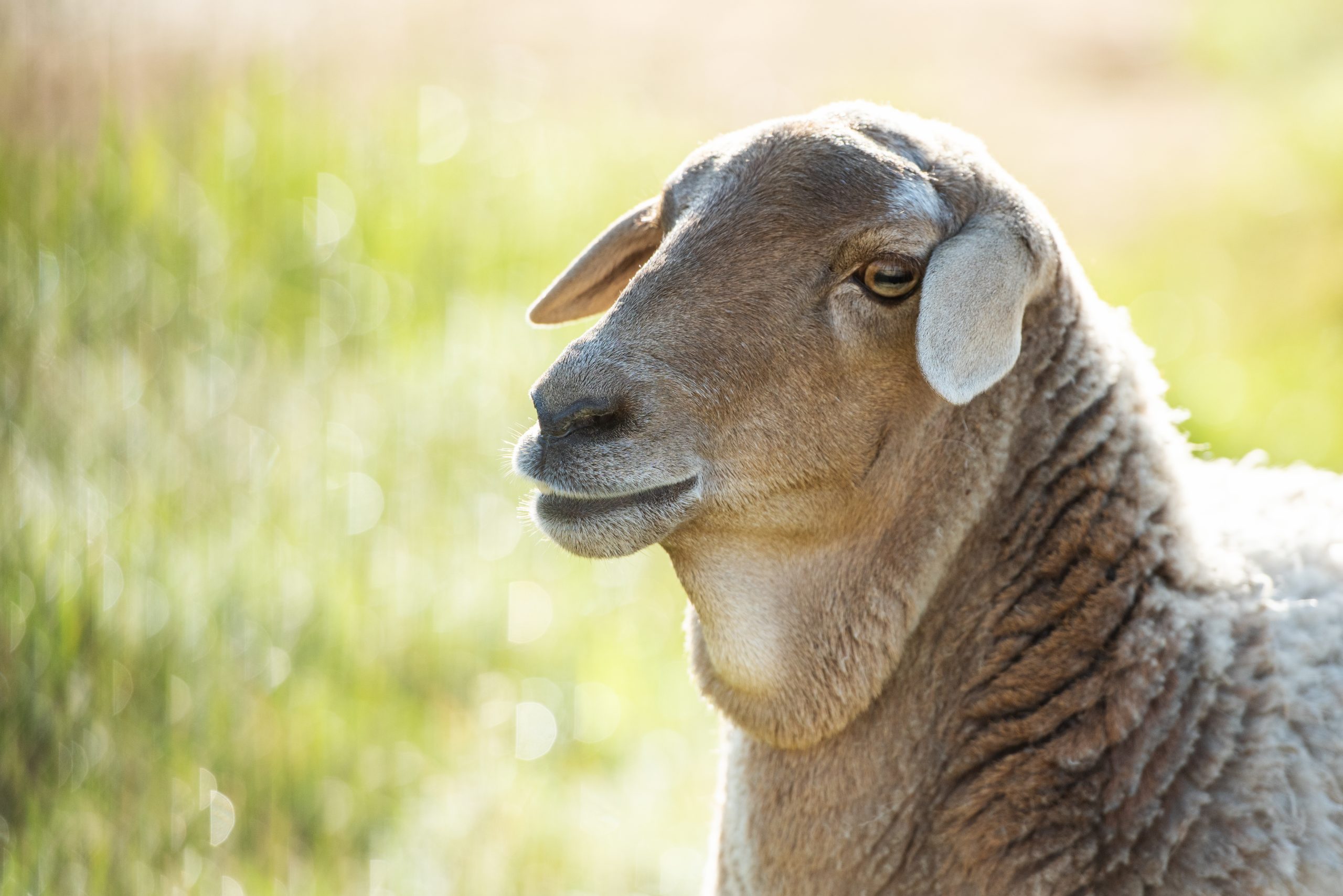

Tammy
Thank you just isn't enough for all you do to help these animals! My heart breaks knowing these things are still going on 10,000 Rhinos since 2007 is staggering all for what? wipe out a whole species of God's creatures for folklore? even if you think it does work is it really worth it? Here in the states we are moving away from old ways saving and protecting animals from pain and suffering I hope and pray it happens globally sooner than later! Keep up the great work I know it's extremely sad and hard to do but YOU all are making a huge impact on our world again I thank you from the bottom of my heart! God bless ???
Urs Thierstein
I greatly admire all you people for the dedication, love and care you display to save these precious animals. Bless you